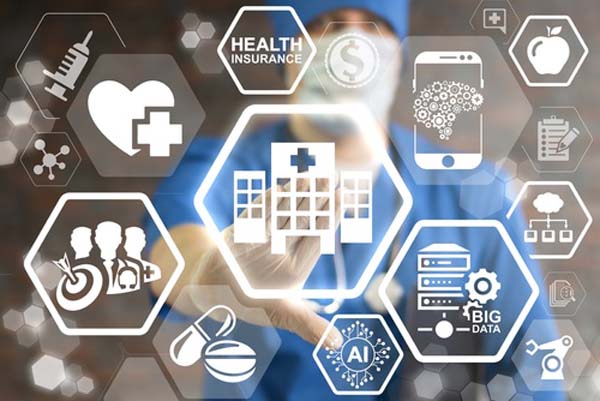
Technology is shaping the future of healthcare in amazing ways
Dr Mohamed Ramady
Public awareness of and demand for a better health service are contributing factors to improved healthcare, especially in the era of social media criticisms of the shortcomings of public health.
For health practitioners, the adoption of technology can be a blessing in disguise. In times when the delivery of healthcare is under pressure, professionals on the front lines often suffer from tunnel vision — focusing on the primary task and overlooking larger, situational awareness — a situation that can only be resolved by the adoption of an advanced technology data platform.
The nature of human expertise means errors are possible even when clinicians are highly skilled experts. To become expert at some process requires automating it, carrying out some or all of the task without continued reference to the wider situation. The point is that even as new technologies improve things, humans will still make mistakes.
In adopting health technology, one must not lose sight of the key issue, which is that patients are the reason for healthcare and should be at the center of it — while recognizing that the pace of healthcare delivery and its modes of operation are accelerating rapidly.
One must also understand that technology in and of itself does not have an agenda to help healthcare. It is needed as a result of the financial pressures to lower costs of production in delivery systems, generate profits for investors, and reduce financial pressure on governments grappling with rising populations and increased occurrences of lifestyle diseases, including hypertension, one of the biggest health issues in the Gulf Cooperation Council region.
In Saudi Arabia, population dynamics have changed the demographic nature of the country, where a large section of the population is in the under-37 age group. A move toward more westernized eating habits and a sedentary lifestyle has resulted in increased demand for healthcare for non-communicable diseases such as diabetes, which is set to increase among both younger and older age groups, along with obesity and morbidity levels.
To meet the needs of a growing population, it is estimated that Saudi Arabia will require more than 20,000 additional hospital beds by 2035. Taking the global average bed density into consideration, the Kingdom faced a deficit of 13,000 beds in 2019 and this is expected to rise to 40,000 by 2035, despite new private-sector health providers.
According to forecasts, Saudi Arabia will need about 14,000 doctors by 2030. It will therefore be a difficult task for the Kingdom to provide all residents with access to efficient and quality healthcare, even if it is successful in financing it through privatization and public-private partnerships.
The Saudi government has taken steps to address this by launching several e-health measures to help improve performance, quality of service and the use of public resources in the health sector, given that a large part of the Kingdom’s Vision 2030 reforms plan focuses on health issues.
Among these e-health applications is the Mawid app, which offers a centralized system that enables patients to make appointments at primary healthcare centers, book, amend or cancel appointments at hospitals they are referred to, and rate the quality of the services the receive, which is an important step in the age of public feedback.
Another app, called Seha, provides online medical consultations, by doctors accredited by the Health Ministry, via chat, voice or video calls. The ministry is also introducing electronic medical prescriptions.
These developments are being helped by the use of artificial intelligence to reduce pressure on physicians and facilities; AI is being used in Saudi hospitals to remotely and promptly interpret X-Ray images, for example. The future for AI in health technology seems exciting as it has the potential to mine medical records, design treatment plans and help to develop drugs faster.
Meanwhile, virtual reality is changing the lives of patients and physicians; trainee surgeons can use it to watch operations and receive digital training. Another fast-developing healthcare technology is augmented reality, which is different from virtual reality in that users are not completely visually detached from the real world but it can provide them with important information as quickly as possible.
We must not forget that some segments of the population, especially the younger Generation Z, want to actively monitor and take care of their own health through the use of technologies such as trackers and other wearable, trendy gadgets, which can monitor and record heart rate, oxygen saturation, temperature and blood pressure. Other gadgets are capable of monitoring body position, activity levels, sleep status and more.
Advances are being made in other technologies that once seemed like the stuff of science fiction, such as high-powered microscopes that allow smartphones to analyzing swab samples, picking up abnormalities in DNA and detecting antibodies.
Health technology is not limited to the use of gadgets but also includes other important areas such as the use of AI in drug development, and the creation of individualized computer simulations for use in the development of medical products such as COVID-19 vaccines, to give a topical example.
Other new health technologies include surgical robots to assist surgeons, and 3-D printing that can print artificial limbs, pills and even replacement blood vessels.
The potential applications of technology in healthcare seem only to be constrained by our imagination.
The writer is a former senior banker and professor of finance and economics, King Fahd University of Petroleum and Minerals, Dhahran.
